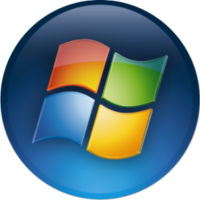So far in my Windows security series, I have looked at securing your system using a hardware firewall to keep your Internet connection secure. I then talked about creating a Windows standard user account, and disabling certain services. In my last post I talked about more methods you can use to secure your Internet connection from within Windows using software and a DNS service.
In this post I will close by talking about applications that can help keep your computer clean of malware – those nasty programs you hear about in the news that can do harm to your computer or data. Let’s take a look at what you can do to help keep your computer clean.
Install Anti-malware Applications
Once your system is up and running, one of the first types of applications you should install are anti-malware applications. Microsoft has their own built in application, Defender, which works nicely, but when it comes to certain malware, using more than one application can help.
Install an Anti-Virus Application
There are many great free anti-virus applications that you can download and use. I have been using a free anti-virus tool for years, and continue to do so today.
One of the most popular anti-virus applications is AVG. I currently use Avira Antivir, and find that it consistently is a top performer among anti-virus applications, although it does report a high false-positive rate during the tests (source: AV-Comparatives). The other downside to Avira is that it displays a popup window advertising their paid product each time it updates. Other than that, I have been pleased with the application.
If you are wondering about free anti-virus alternatives, you can check out these:
There are also great anti-virus products on the market that require you to purchase them. Some great products include:
Note:
While I have listed many different anti-virus applications, it is important that you only install one. Never install more than one anti-virus application on your system.
Many applications listed in the previous two lists may include more than just an anti-virus application. Some may also include a software firewall, and/or an anti-spyware application, or another security application.
Let’s look at some popular anti-spyware applications.
Install an Anti-Spyware Application
Just as there are many anti-virus applications available on the market, there are just as many, if not more, anti-spyware applications. Unlike anti-virus applications, you can install multiple anti-spyware applications on your system, in fact, I recommend you do so.
The reason I recommend you install more than one of these applications is because one application may not find all the anti-malware on your computer. Running several applications increases the chances that you find malware that another application might have missed.
There are several applications that I recommend you take a look at, and even install (they are all free):
There are many more other anti-malware alternatives available for you to use, but these three should help to keep your computer clean.
Now that you have anti-malware applications installed, it is important to run them on a regular (at least weekly) basis. You should even run them if you notice your computer getting slow, displaying popup windows, or even crashing on a regular basis.
There is one more tool that I would like to talk about that can help protect your system when you browse the Internet.
Sandbox Your Web Browsing
A new tool that I recently been using over the past few months helps keep your computer clean, not reactively, by proactively. It isn’t a scanning tool, it is a sandbox tool called Sandboxie.
What is a sandbox? Imagine surfing the Internet, downloading the content from all the web sites you visit. Now imagine if one of those web sites also downloads some malware on your computer without your knowledge.
This malware then executes on your system, and can do any number of things: record what you do, send out spam, delete/modify your data, or even make your computer inoperable.
Now by using Sandboxie, you can now contain the files you download from the Internet into a sandbox. This sandbox is a part of your hard drive that helps to prevent files that are in it to communicate with the rest of your system. So when you browse a web site from within a sandbox, and you accidentally download some malware, the malware can’t execute outside the sandbox. By simply deleting the contents of the sandbox, the malware gets deleted along with it.
While it may not be perfect, this is by far one of the best applications I have used to keep my computer protected. If you are interested, I wrote a post about protecting your computer with Sandboxie where I outline how to use the software.
This is the last post in my series on securing Windows 7. I’ll try to keep the information in these posts as updated as possible, and may even add more information in the future. I hope this series has helped you to make your Windows 7 system more secure.
